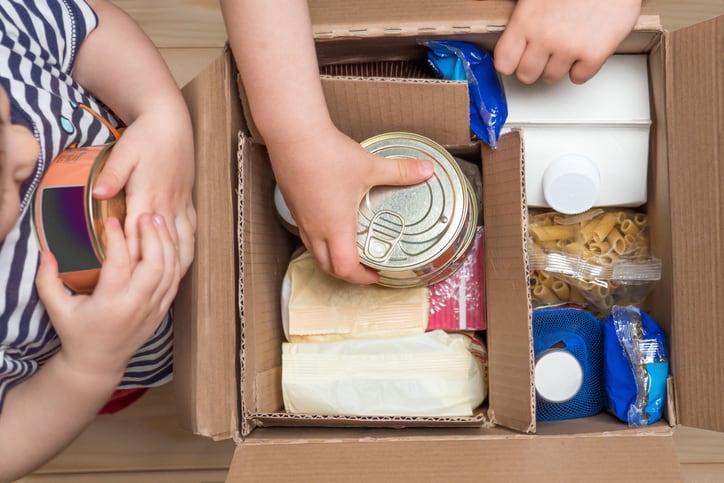However, most retailers and brands will need to rethink their promotional strategies to attract and retain these shoppers as they are not as deal-driven as more financially secure shoppers, IRI notes in the most recent release of its series on COVID-19 and Navigating the Path Ahead.
According to the report, The Changing Shape of the CPG Demand Curve: SNAP Benefits, the number of Americans reliant on Supplemental Nutrition Assistance Program (SNAP) benefits increased 16% in April from March to reach 42 million.
The increase closely mirrors the surge of unemployment following the declaration of the Coronavirus pandemic, which virtually froze overnight several segments of the economy, including food service, and the jobs that go with them. And while some states are slowly reopening these segments of the economy, the unemployment rate is predicted to remain high at an average of 15% in the second and third quarters of 2020, IRI notes.
As the number of SNAP beneficiaries increases, so too does their share of food and beverage purchases – rising to account for about 9.7% or roughly $55b of total food and beverage annually, according to IRI.
But to capture a larger portion of these sales, retailers and manufacturers may need to rethink how to court SNAP beneficiaries given traditional promotions do not hold as much sway over them and more affluent shoppers, IRI notes.
Based on IRI’s Consumer Network data collected between March and July of this year, the percentage of dollars sold on promotion drops alongside income with households making between $15,000-24,900 spending 17% of food and beverage dollars on promotions. For those making less than $15,000 they spend about 15% of their food budget on promoted items. On the other end of the spectrum, households with more than $100,000 spend about 20% of their food budgets on promotions.
According to research it conducted between March and July, the dollars SNAP shoppers spend on promoted products under index across some channels, with the Dollar channel a notable exception. It found dollar sales on promotions, including manufacturers coupons, indexed at 89 in total US grocery, 91 in select mass and 85 in total US drug compared to non-SNAP shoppers. In dollar, however, SNAP shoppers over-indexed at 112 of dollar sales on promotions.
This suggests that most of the purchases made by SNAP recipients are made based on need and they are not in a position to wait for a sale or to stock up during a sale, IRI notes.
The big exception is the dollar channel, which over-indexes in SNAP recipients potentially because of the types of promotions it offers. For example, Dollar General offers shoppers more deals before they get to the store, such as weekly $5 off deals and by providing better-for-you and budget-minded recipe ideas, such as baked ziti on a $5 budget, IRI notes.
How to DEEPEN connections with SNAP consumers
Given the conventional playbook of promotions and sales doesn’t work as effectively at reaching SNAP beneficiaries, IRI recommends that retailers and brands “DEEPEN connections with SNAP Consumers” – a bit of word play that represents engagements that demand space / are needs-based, engage via targeting, educate and inform, consider the purchase cycle, provide experiences and new product alerts.
IRI explains that like many consumers who are cooking more at home now, SNAP beneficiaries need help coming up with meal plans that are affordable and leave nothing to waste. As such, retailers and manufacturers should promote meal solutions that are healthy, affordable and convenient. Specifically explain how ingredients support specific health issues and how they can be used to create different tastes and experiences.
Ways to do this include virtual store walks using video conferences of photos to highlight healthier options, and virtual cooking classes that who viewers how to effectively make the most of each ingredient and their entire cart, suggests IRI.
Whenever possible, retailers and brands should note how much a package or recipe feeds a family for four for $5 or $10 to help them better budget and maximize satiety and nutrition for each dollar they spend, IRI recommends.
Retailers and brands should also consider when benefits are made available and plan their promotion and outreach efforts accordingly. IRI notes that SNAP shoppers spend more earlier in the month, which is likely driven by when they majority of state benefits are issued.
With this in mind, it recommends offering pre-shop planning activities during the first two weeks of the months and emphasize brands that resonate stronger with SNAP or lower income consumers.
Ultimately, while SNAP recipients may have less to spend individually, cumulatively it adds up – making this a group that retailers and brands should not ignore, especially considering the more help they can offer during a trying time in a consumer’s life, the more likely that shopper will remain loyal when they are off SNAP and have more money to spend.




